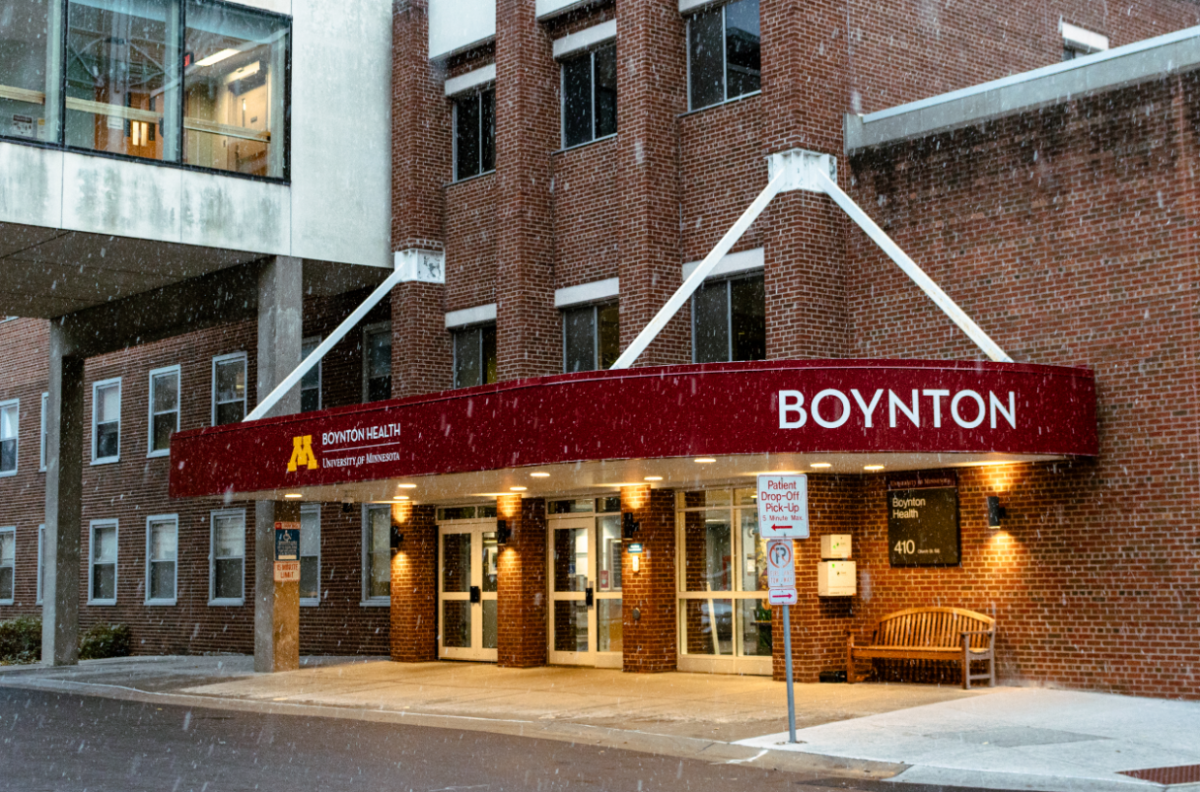When Penn State made a public commitment to transition its campus from burning coal to a cleaner fuel last week, some students at the University of Minnesota began to worry the Twin Cities campus is falling behind.
Members of Campus Beyond Coal, a student group started in fall 2009, want to see University President Bob Bruininks follow in Penn StateâÄôs footsteps within the next five years, sophomore Stephanie Schumacher, a leader of the groupâÄôs research team, said.
The group was created to urge Bruininks to make a public commitment to move the campus away from coal as soon as possible, Schumacher said.
CBC collected more than 1,000 student signatures backing its proposal in the first three weeks of classes, adding to 4,500 student signatures from last year, CBC spokeswoman Saoirse McMahon said.
About 30 percent of the energy produced at the UniversityâÄôs Southeast Steam Plant, which sits upstream from the Washington Avenue bride on the Mississippi River, comes from coal.
The coal burned at the plant is used to heat 94 of the UniversityâÄôs buildings in the winter âÄî nearly the entire Minneapolis Campus âÄî and cools 19 of those, according to a summary of the plantâÄôs operations.
Last spring, Bruininks added his signature to the American College and University PresidentâÄôs Climate Commitment report. The ACUPCC is an organization comprised of many university and college presidents who are âÄúdeeply concerned about the unprecedented scale and speed of global warming and its potential for large-scale, adverse health, social, economic and ecological effects,âÄù the commitment states.
The organization wants its member colleges and universities to exercise leadership in committing to reduce the human effects of global warming, the commitment stated.
Schumacher said the commitment requires the University to submit several documents over a number of years, including one in December containing an institutional action plan for becoming climate neutral.
According to the ACUPCC commitment, the action plan must include a target date for achieving climate neutrality, a set of actions to make climate neutrality and sustainability a part of curriculum and other educational experiences for all students.
To achieve climate neutrality, the University put together a sustainability committee which is currently working on an action plan.
McMachon and Schumacher said they want the action plan to include an initiative to move the campus off coal.
University spokesman Dan Wolter said that the University knows students and groups like CBC are important, and while the University does not always agree with every policy the group wants to implement, âÄúwe very much appreciate their interest because it helps us get funding and find new sources of energy, and thatâÄôs very important.âÄù
It is also important to recognize how far the University has come in reducing its carbon footprint already, he said.
âÄúItâÄôs important to know some of the progress that weâÄôve made, particularly in the last ten years,âÄù he said. In the late 1990s, the University used close to 100 percent coal to heat the Twin Cities campus, and that has dropped significantly.
âÄúItâÄôs not just about coal âÄî this is about reducing the carbon footprint as a whole,âÄù Wolter said. âÄúThe University has been converting biomass to energy, using woodchips in our steam plant, and throughout the whole campus you have seen an overall renewed push to conservation.âÄù
The UniversityâÄôs location in the upper Midwest is also a factor.
In the region, more than 70 percent of power comes from burning coal.
âÄúSo, when you look at the region, I would maintain we are a leader [in energy efficiency],âÄù Wolter said.
Penn State made a commitment to move away from coal after asking for funds to convert its coal plant to natural gas, and will implement the changes little by little, âÄúwhich is definitely feasibleâÄù for the University, McMahon said.
CBC members said research they have done shows the University could have a plan in action by 2012.
Currently, many other colleges and universities have made the switch, including University of Wisconsin âÄì Madison.
Wolter said he thinks there are still many other factors to consider.
âÄúSystemwide, itâÄôs a very positive story,âÄù he said. âÄúSome people may not think weâÄôre moving as quickly as we should be, or as quickly as other campuses, but I would maintain weâÄôre moving very quickly considering the age of the campus and the budget climate we are in.âÄù







